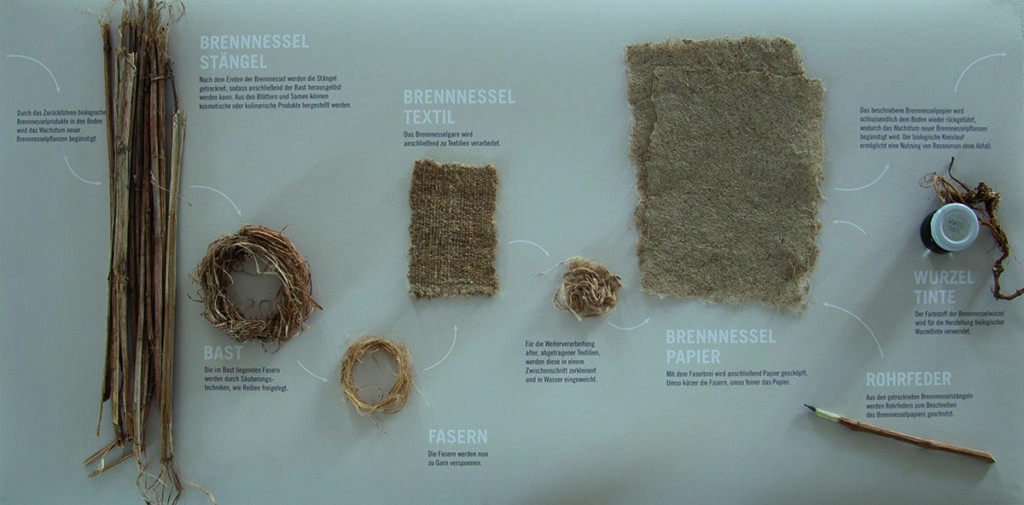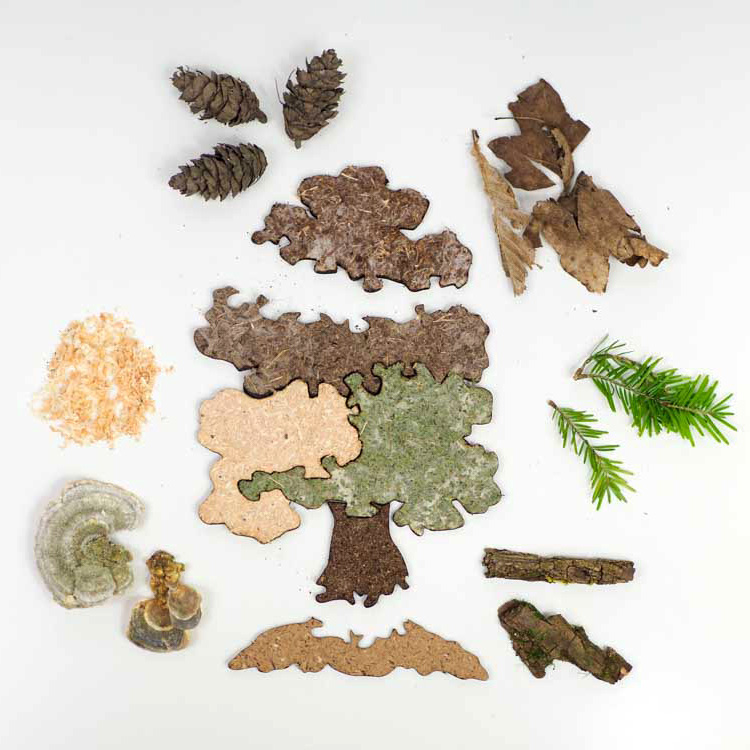
A project course held weekly from March – June 2023, led by Julia Moser, Monja Hirscher, Hubert Lobnig.
COURSE DESCRIPTION:
Collecting, harvesting, nourishing, breaking, preserving, knotting, grinding, melting, thickening, spreading, shaping, mixing, drying, soaking, stretching… Materials can be manipulated in countless ways, yet their properties and conditions also determine what is possible—and reveal their own limits. Whether it’s ship caulking made of birch bark, porcelain from bones, or bread spreads from lichen – innovative design requires deep engagement with the origins and characteristics of materials, as well as a sensitivity to their handling.
We aim to rediscover the materials that surround us – physically and contextually – to recognize unseen potential and explore boundaries. We will work with both novel materials such as kombucha leather or mushroom mycelium, and with those we encounter in everyday life, often as overlooked waste. These materials will accompany us throughout the semester, inviting us into a deep exploration. We will observe closely what they contribute, what they tell us, what we can learn from them, how they seduce us – and what emerges from the interaction. How do our own backgrounds influence the process? And what influence do the materials themselves exert?
Concrete assignments will help us investigate the material in all its facets, rethink it, and form a connection. These processes will be documented and archived continuously. The course encourages an intuitive, process-oriented approach in the beginning, which will later serve as a conceptual foundation for individual design projects.
SELECTED PROJETS:
Moss Volt
Franziska Sumereder
Moss Volt is a study of photomicrobial fuel cells that harness the photosynthesis of plants to generate electricity. The system consists of four ceramic cells in which moss grows on moist, and therefore conductive, soil. Each cell is equipped with an anode, where electrons are collected, a cathode, where the electrons are “used,” and an external circuit that connects the anode and cathode. Through this arrangement—along with the stabilization of power supply via a battery—it becomes possible to continuously power an LED light.
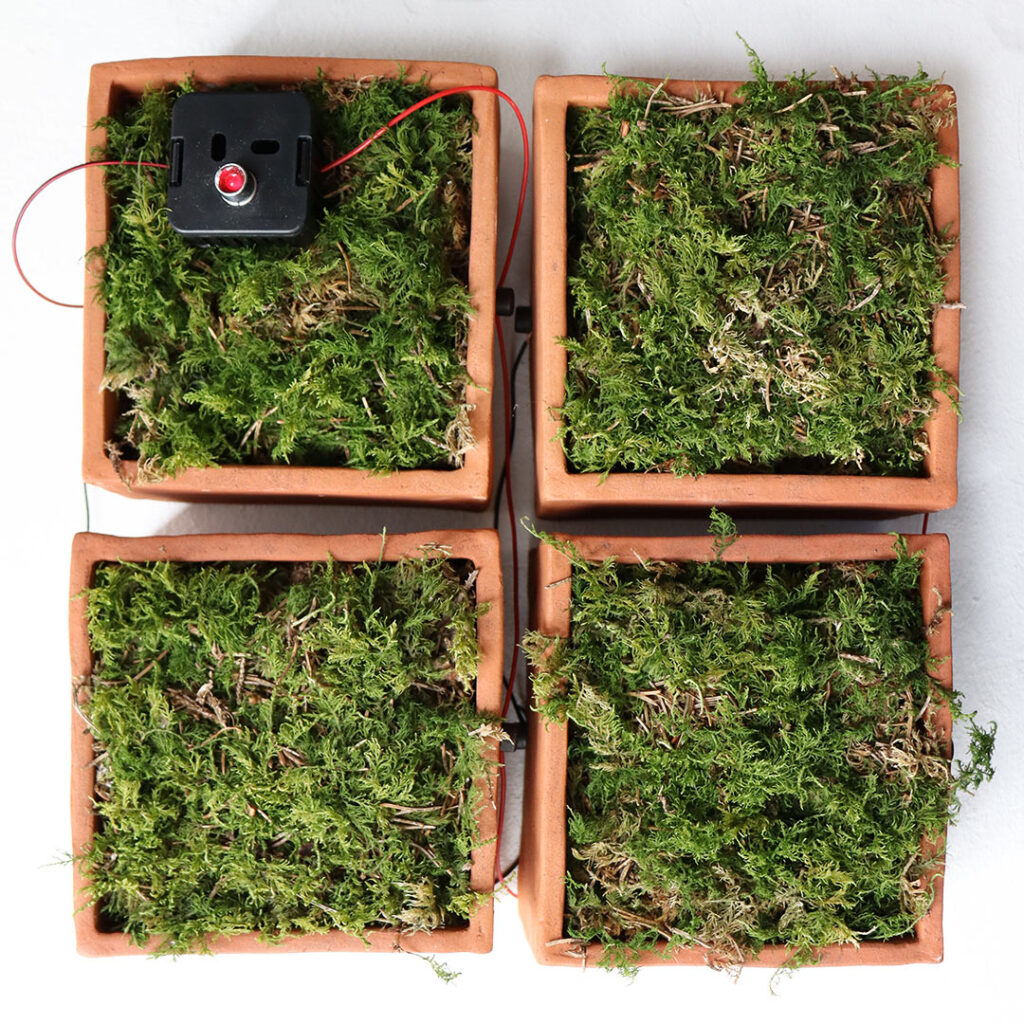
shell (armor)
Eva Binder
Brittle iron is separated during steel production while still in liquid form and solidifies into unique formations – organic, yet lifeless. These pieces have been reconnected without losing their individual shape. Their unity symbolizes armor, a protective shield; it guards what lies beneath, yet remains vulnerable. It clings to the body, attempting to merge with it…
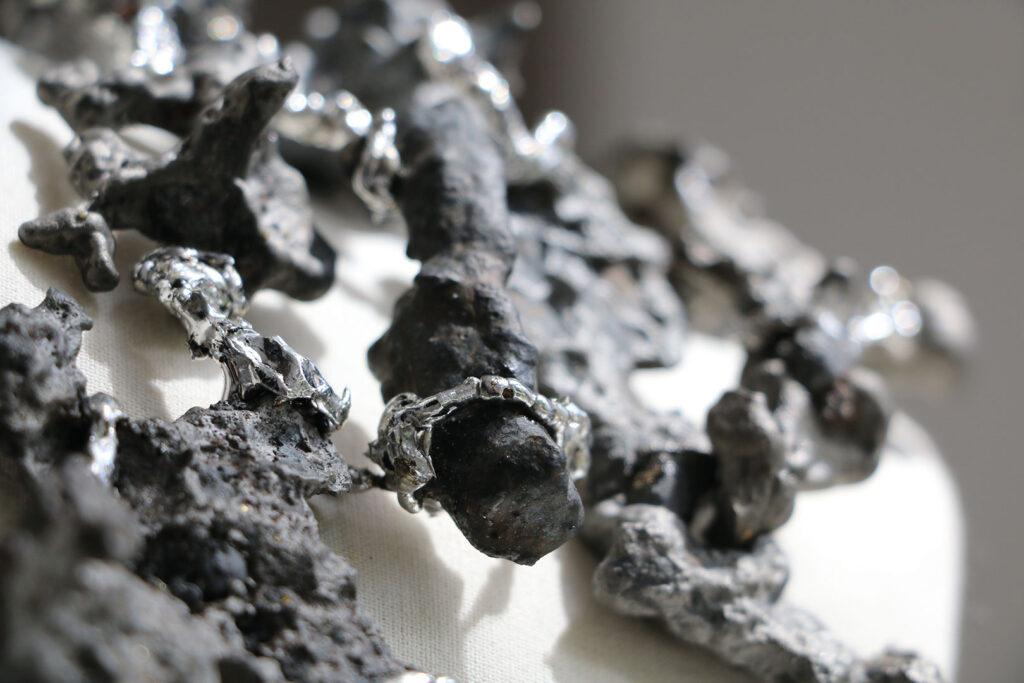
Lichtblick
Simone Lichtenberger
This project is a lamp specifically designed for observing the growth of a kombucha culture. Through daily observation and the anticipation of finally seeing the SCOBY emerge on the surface after about two weeks, a certain bond forms with the organism. This emotional connection led to the decision to work with the living SCOBY itself. The combination of light, liquid, and fermentation culture creates a captivating aesthetic experience.
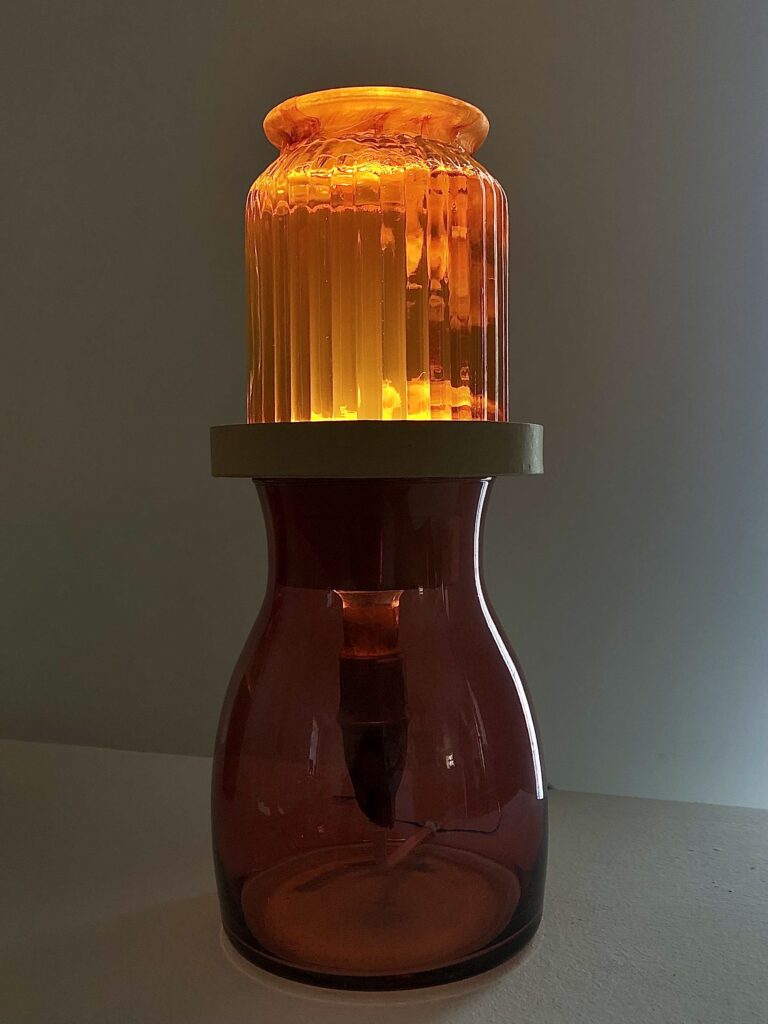
nettle to nettle
Judith Kaiser
The developed “nettle-to-nettle” cycle follows the Cradle-to-Cradle principle, a sustainable extension of the traditional circular economy. Within this cycle, the stinging nettle is used for a variety of purposes: the fibers found in its stems are processed into textiles, which, after use, are shredded and repurposed for papermaking. This paper is then written on using a biological ink made from plant roots. In the end, the paper can be returned to the soil for fertilizing.
